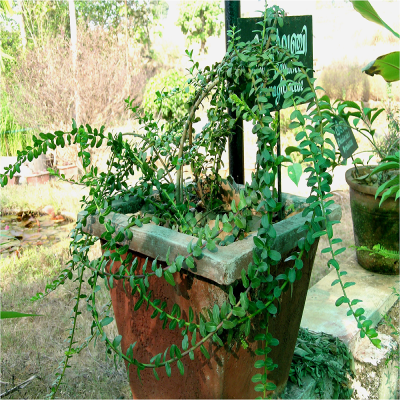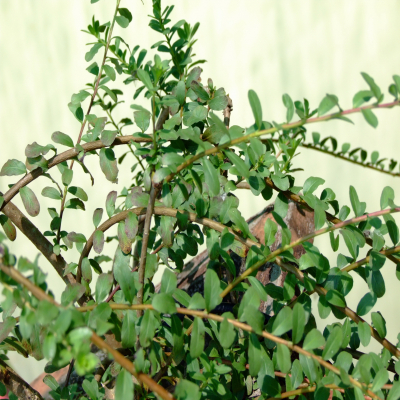Rotula aquatica Lour.
Synonyms : Rhabdia lycioides Sensu C.B.Clarke, non Mart. , Ehretia cuniata
Family : Boraginaceae
Group : Diuretic/renal protectant
Parts Used : Root
Vernacular Names :-
| English | : | Rotula |
| Malayalam | : | Kallurvanchi |
| Sanskrit | : | Pashanabbeda |
| Gujarathi | : | Pasanabhedah |
| Tamil | : | Seppuniringi |
| Telungu | : | Pasanabhedah |
Distribution and habitat: Found throughout South-East Asia. In Kerala seen in Cannanore, Wayanad, Malappuram, Palakkad, Trichur, Ernakulam, Idukki, Kottayam and Pathanamthitta districts.
Botany: Under shrub, upto 60-180 cm high with numerous short lateral arrested branchlets often rooting.
- Leaves: Simple, alternate or clusters, oblong to obovate or linear oblong, entire or shallowly toothed, glabrescent or sparsed scabrous, ciliate along the margins, cuniate at base, obtuse or shortly apiculate at apex; petioles 0.3 cm long, greenish.
- Flowers: Pink or purplish, solitary or aggregate in terminal or axillary branches, solitary or in few flowered racemes. Stamens 5, exserted at the base of the corolla tube, with filaments up to 0.3 cm long and oblong-ovate anthers almost 0.2 cm in length.
- Fruits :Subglobose, orange red drupes, tipped with the remains of the style.
- Seeds :Oblong, albuminous.
Uses: The roots are bitter, astringent, cooling, and laxative. It is used in piles, kidney and bladder stones and venereal diseases.
Formulations: Putikaranjasavam, Traikantaka ghrtam
Propagation: Seeds


